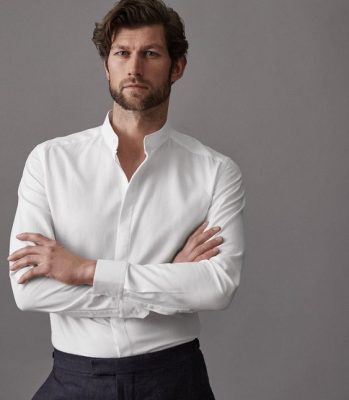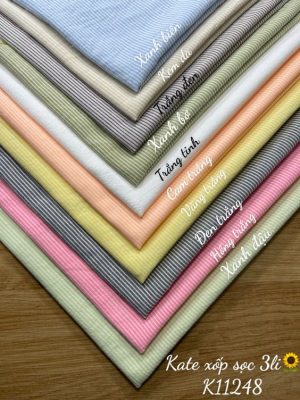Top 8 Fabrics for Making Shirts with Beautiful Shape and Few Wrinkles
What is a shirts?
A shirt is a type of garment that covers the upper body, including the neck and both arms. The term “sơ mi” in Vietnamese translates to “chemise” in French and “shirt” in English. Depending on whether the shirt is intended for men or women, there may be some modifications to suit the respective gender.
Modern shirts typically feature a collar, which is often reinforced with an inner layer to provide added stiffness. The sleeves of the shirt are similarly designed, with the cuffs typically tailored to fit snugly and sometimes lined with an inner layer. Shirts typically have buttons down the center, at the collar, and on the sleeves.

Top 8 Fabrics for Making High-Quality Shirts
Creating high-quality shirts with an elegant shape and minimal wrinkles begins with selecting the right fabric. In this guide, we will explore the top 8 fabrics that will help you achieve these results. From cotton to linen, we’ll discuss the key features and benefits of each fabric to ensure your shirts not only look stunning but also remain wrinkle-free.
- Kate USA: A high-quality fabric used for crafting premium men’s dress shirts. It is known for its colorfastness, bright fabric quality, and excellent sweat-wicking properties.
- Kate Silk: This fabric has anti-stretch and anti-wrinkle properties, but it can be hot to wear, and it has lower sweat absorption due to its high polyester content.
- Kate Polin: Often referred to as the “twin brother” of Kate Silk, this fabric contains a higher percentage of cotton fibers, which makes it better at sweat absorption. It is considered a superior fabric for crafting high-end men’s dress shirts compared to all other fabric types.

- Due to the presence of cotton fibers, the fabric has excellent moisture-wicking capabilities.
- The fabric does not shrink and maintains its color well over time.
- It is easy to clean and launder.
- The fabric has a smooth, flat, and thin surface.
- It is non-irritating and safe for the skin due to the presence of cotton fibers.
- The fabric is prone to wrinkling and requires regular ironing.
- It has low elasticity.
1.2 Khaki
Classification:
- Non-stretch khaki fabric has a moderate stiffness, resulting in a formal, sturdy, and robust appearance when used to make products
- Stretch khaki fabric, due to the addition of artificial spandex material, offers a certain degree of elasticity, providing comfort to the wearer.
- It is cool and durable, resistant to wrinkles, providing a comfortable and highly breathable feeling.
- The fabric does not cling too tightly to the body.
- The fabric’s stiffness may make it feel less soft and the cost is relatively high.
https://sewingfromhome.com/tutorials/best-fabrics-for-making-shirts/